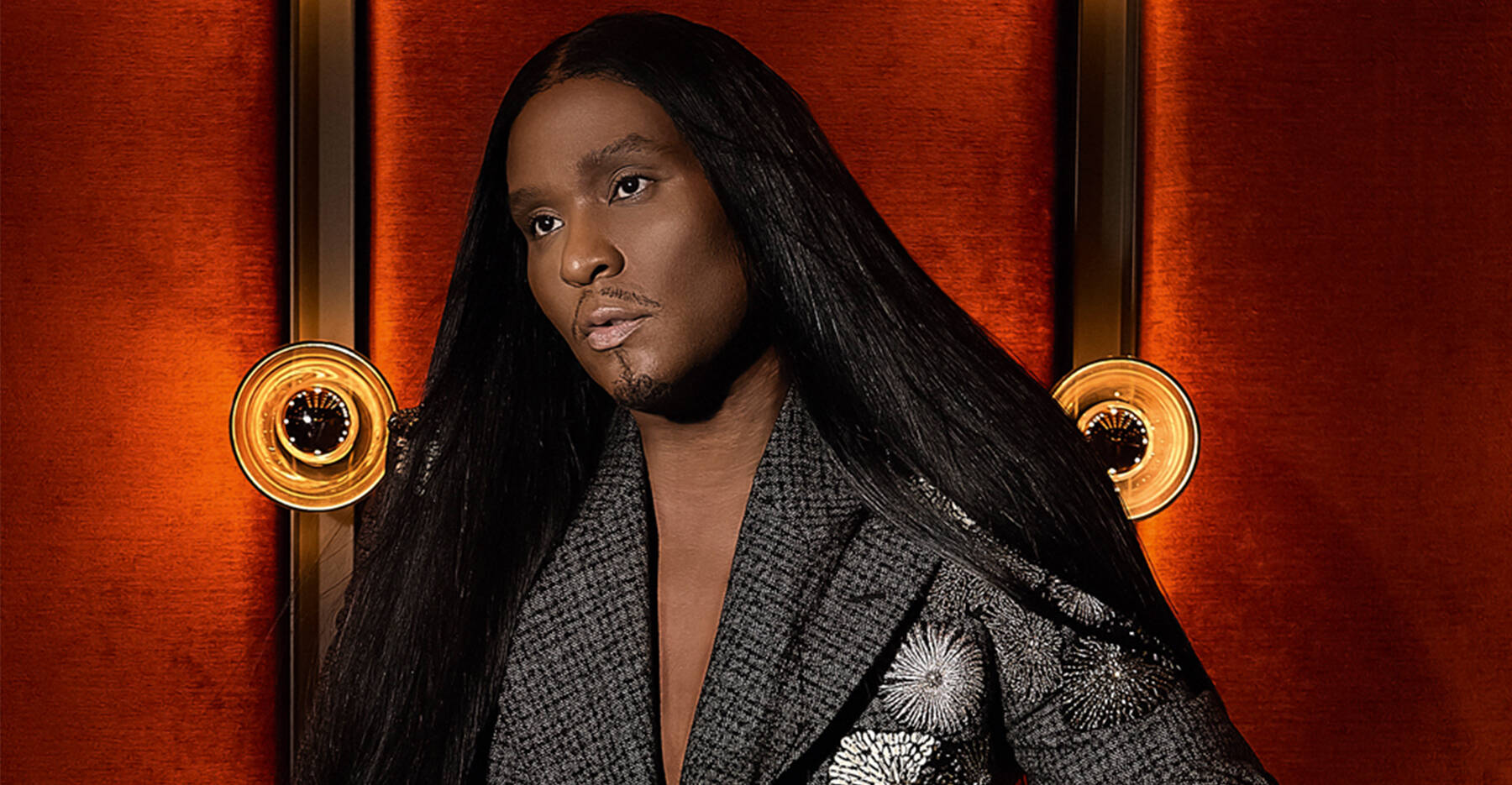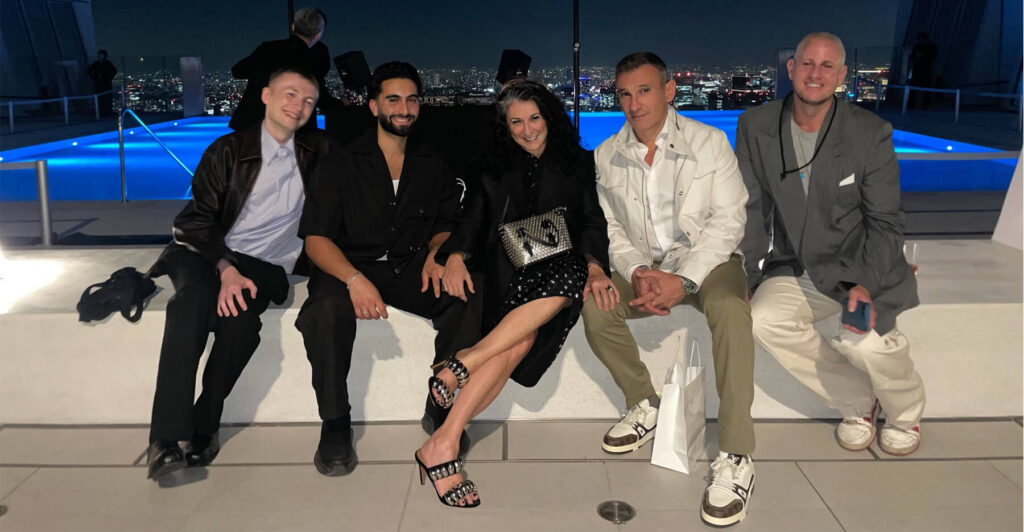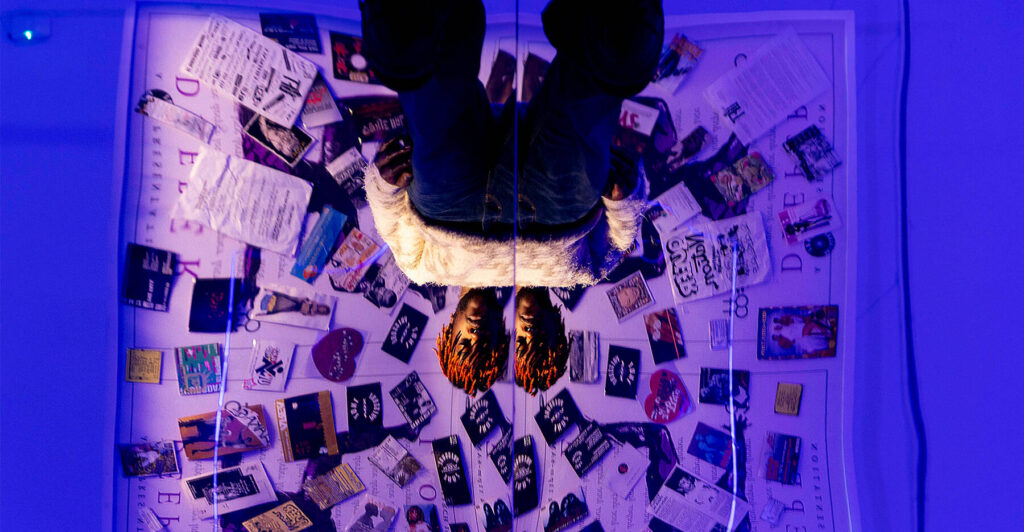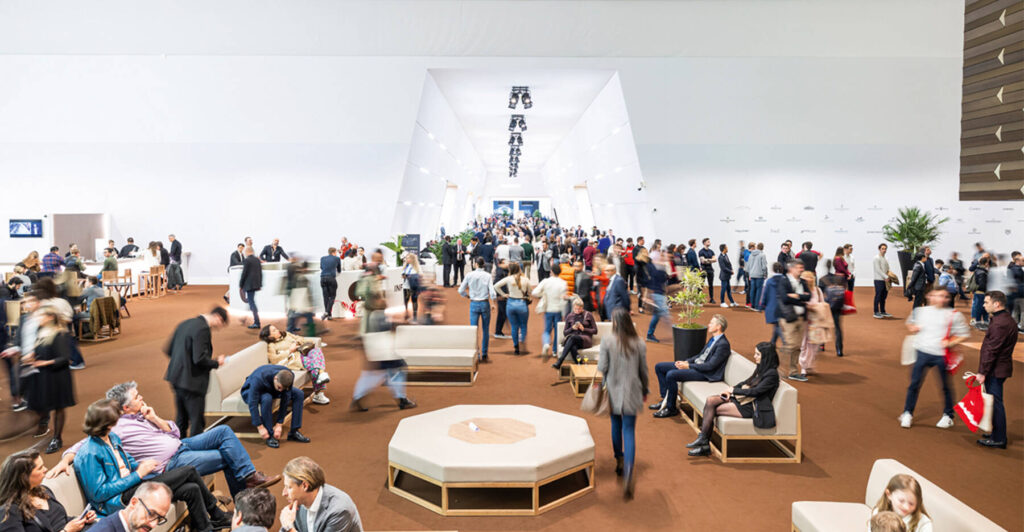Law Roach is the image-maker who’s so good at his job he even gave stopping work a glow-up. The man who last year announced to the world that he was retiring from the fashion industry as stylist to the stars (among them Bella Hadid, Anne Hathaway, Kerry Washington, Mary J. Blige, Celine Dion and his muse, and “fashion bff”, Zendaya) did not fade into the background, but somehow became more powerful.
A former judge on America’s Next Top Model and 2022’s inaugural winner of the CFDA Stylist of the Year, today he is one of the most important Black figures in fashion.
Despite quitting styling overall, he made the decision to continue with Zendaya and the pair have created some of this year’s most high-octane red carpet moments. He’s also written a book and is about to launch a platform that will help a new generation of stylists do what Roach has famously done: against all odds, rise to the top of your game.
In styling himself for 10 Men, Roach, 46, shows not only his way with a garm, but demonstrates his own comfort in front of the camera. Has he always felt so easy on the other side of the lens? On a Zoom call from his house in Atlanta, he laughs. “Working so long with Zendaya and watching her confidence in front of the camera, I just learned,” he says. “She’s been working since she was 13, starting at Disney, and I think I got some of that confidence and training by default over the years. When I did my first photoshoot I was like, ‘Oh, okay, I understand how to move.’ I think once you learn what the good angles are, you’re all set.” His best side, he says, is his left.
As a self-described “image architect” (he feels that ‘stylist’ is not an accurate description for the strategic role he plays), Roach has created many unforgettable and zeitgeisty moments, including transforming Celine Dion’s style image overnight in 2016, when he dressed her in a Vetements Titanic hoodie. He is the fashion power broker. When those looks go viral, they lead to significant conversations and, often, lucrative hook- ups with global brands for his clients.
But it’s not just about choosing the right look. It’s about making his client feel great in it. “To help other people find confidence you have to be confident yourself,” he says. “Sometimes it’s just a touch, right? It’s the way you might touch someone’s shoulder. That can give them extra confidence because they feel like they’re in good hands.”
How Lawrence Roach came to develop his on-the-money sense of taste is a remarkable thing. He grew up on the south side of Chicago, the oldest of five siblings with a single mother in a disruptive household. Moving out when he was 14, he had to fend for himself financially. As a kid who loved fashion (it’s not like these things go away when you’re down on your luck, sometimes they’re the only thing that keep you going), he couldn’t afford new clothes. “When I was on my own and forced to take care of myself, it all became about being as cost-effective as possible,” he says. “That’s when I landed in the thrift stores and that’s where it all started.”
Roach’s grandmother introduced him when he was a kid to what she called “junking”, which meant the thrift stores of Chicago became his Rodeo Drive. “I’d find really cool suits from the ’70s and wear them with a T-shirt. No one else was doing that and I felt proud I could find something from the past for $5 and make it feel cool,” he says. After university (he studied psychology at Chicago State), his thrifting hobby became a business. Compliments he got about his own clothes were being swiftly followed by questions: “‘Where did you get that? Do you have anything else? Can you get me a coat like that?’ That’s when I figured out I could start a business.”
He went from storing stock in the trunk of his car to opening a bricks-and-mortar shop in 2009, Deliciously Vintage, in his own neighbourhood on the south-west side, which he ran with a friend, Siobhan Strong. It sold a mix of high and low fashion. “Yeah, we had Chanel, but we also had a lot of pretty, 1980s what we’d call ‘working lady dresses’, with pussy bows and prints and little belts,” he says. “We’d find them for $2 or $3, do the smallest alterations and sell them for, like, $60 or $70. We had a great business.”
When Kanye West paid a visit to the store the same year it opened, he put Deliciously Vintage, and Roach himself, on the map.
“When we got a little (fame) we started getting phone calls from stylists. We still had a landline phone then,” he says, laughing, “and people would call from everywhere. And they’d be like, ‘Oh, I’m a stylist. I have this client,’ or ‘I’m doing this editorial or a music video.’ I knew a couple of stylists from TV (this being the Rachel Zoe era) but all of a sudden I was like, ‘Oh wait, there aren’t just three stylists, there’s a lot. This is a viable source of income for people.’ It just brought the whole idea that I could do this closer.”
It was through a customer in 2011 that he met Zendaya. The client was a family friend of the then 14-year-old actor’s father Kazembe Coleman and she asked Roach to fly out to her house in Los Angeles with some looks. “And this beautiful young girl walked in,” he remembers with fondness. “She was poised and tall, and I was just like, ‘Oh my God.’” Her father asked Roach to take her to the mall and style her for Justin Bieber’s Never Say Never premiere. “We’ve been together ever since.”
The two have what sounds like a kind of sibling relationship. Do they argue? “Absolutely! Of course we argue. But I know who’s the boss. She’s the boss!” he says. “People think that she just wears whatever I tell her. It’s not true. She has a strong opinion, I have a strong opinion, but we know how to compromise.”
This year, on a podcast, Roach revealed the names of the five big houses that wouldn’t lend to Zendaya at the beginning of her career, and how he has never dressed her in them since. But this has never stopped the pair from bringing the looks, including his favourite, the AW95 Thierry Mugler ‘robot’ gold bodysuit she wore to the Dune: Part Two London premiere. “I think it’s one of the greatest looks of the century. I was like, ‘Shit, where do I go from here?’” WWD reported that the look generated £10 million in ‘media impact value’ for Mugler. “I just had to think I will never top that and not try to compete with myself.” He followed up with another smash for the film’s Seoul premiere – the AW99 Alexander McQueen for Givenchy glow-in-the-dark ‘motherboard’ dress.
Roach has been one of the forerunners in the recent trend for extending the world of the movie onto the red carpet through clothes. After Dune came tennis drama Challengers. “Bringing (Zendaya’s character) Tashi Donaldson alive and making her feel like a real person was
so much fun,” he says. “Margot Robbie did such a great job with Barbie, but we already knew Barbie, so all those things felt familiar, right? What I found fun was to introduce Tashi to the world before the movie came out, so people (would come to the film) looking for this strong, beautiful, vivacious woman we had created through clothes. I don’t think it’s ever been done that way before. It let me show people just how powerful fashion could be when it comes to promoting these projects.”
Roach is now looking beyond movie tours and celebrity clients. “I think the next stage is to make myself tangible to the people who admire my career. I dress the most beautiful, talented people in the world, but I’m thinking about what I can do for everybody else who might not get to work with me in that capacity.”
His book, How to Build a Fashion Icon: Notes on Confidence from the World’s Only Image Architect, which released this month, is the first stage. “It’s all about figuring out your confidence and how to use fashion to do it,” he says. His tips include not being afraid to go back to those pieces or accessories that make you feel good. “It could be a piece of jewellery, your boyfriend’s shirt or your dad’s blazer – don’t be afraid to wear it again.” And on the flip side of that? “Challenge yourself. I’ve had clients who say, ‘Oh my God, I look horrible in green. I never wear it.’ So I will automatically get them to try on a green dress. Go to the things you wouldn’t normally. And always try (the clothes) on because you can really be surprised.”
With the book and his new online learning platform, which is set to offer styling courses and, potentially, agent representation, it seems like Roach is looking to serve the kind of kid he once was. The teenager who didn’t know about the fashion industry because there weren’t people like him visible in it. “Yeah, that’s exactly what it is. I was never an assistant. I was never an intern. I never had anyone’s infrastructure to borrow from. The platform is for the people who live somewhere where the fashion industry isn’t prevalent. I can give them every tip, every trick, every trade secret that helped me become the Law Roach that people like to watch.”
It’s the opposite of gatekeeping. “Fashion can still feel a bit elitist and snobbish and that’s just not who I am,” he says. “I’m a service provider at the end of the day. I’m like the gardener. I can wear the best clothes in the world, but it doesn’t make me any better than the man I’m standing next to. I always like to remember that.” Law Roach: come to him for the looks. Stay for the hard-earned wisdom.



